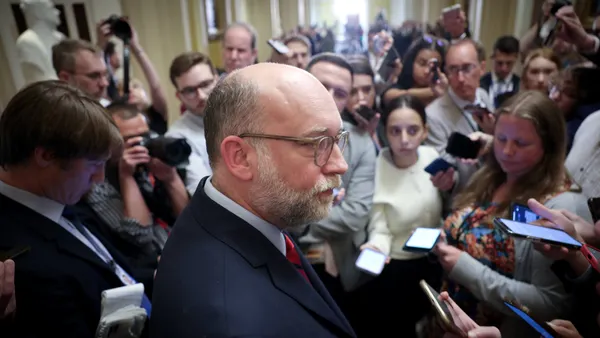Dive Brief:
- The COVID-19 pandemic could reduce large, self-funded employers' healthcare costs by as much as 4% in 2020 due to deferred medical care, according to an updated study published May 1 by Willis Towers Watson.
- The advisory firm said its estimates vary depending on geography and take into account projections of the number of Americans expected to be impacted by the first wave of COVID-19. At a 1% infection rate, for example, employers' healthcare costs could decline between 1% and 4%. But at a 20% infection rate, those costs could increase between 1% and 3%. These high-end estimates are still lower than Willis Towers Watson's previous high-end estimate that healthcare increases could reach 7% for self-funded employers this year.
- The estimates reflect increases to medical and pharmaceutical costs only, Willis Towers Watson said. Other health plan costs, including dental and vision care, will likely decrease in 2020 as employees eliminate some discretionary care, the firm said.
Dive Insight:
Employee benefits analysts including Willis Towers Watson are essentially saying that while COVID-19 testing and treatment could add significant healthcare costs for employers in 2020, employees may also defer certain types of care.
Some observers, including the American Academy of Actuaries, have already noticed reduced healthcare spending during the initial months of the pandemic, primarily due to social distancing or desire to free up hospital space for COVID-19 patients, InsuranceNewsNet reported last month. Management consulting company Milliman predicted in an April report that 2020 health insurance payers would see a net reduction of between $140 and $375 billion in costs nationally through the end of June. But Milliman also said payers could see an increase in costs after the pandemic "due to deferred care and pent-up demand," adding that "those costs are likely to be significant."
In its previous analysis released in March, Willis Towers Watson estimated that the total medical and prescription costs for persons infected with COVID-19 could range from $250 for mild cases to $100,000 for catastrophic cases, including those requiring intensive care. A separate report released in April by the Integrated Benefits Institute found that the total cost of the COVID-19 pandemic to employee benefit plans could exceed $23 billion, provided that the U.S. records over 15 million cases of the disease.
Besides costs for employers, the pandemic has also impacted how insurers approach the employee benefits space. Among other things, insurance carriers surveyed by LIMRA in April said they were considering whether to automatically continue coverage for all employees for a specified period of time, as well as extend eligibility on a case-by-case basis to employees whose job status has changed. Employers who are hiring to fill customer demand during the pandemic, like grocery chain Lidl, are making new hires immediately eligible for some healthcare benefits.
Elsewhere, employers have looked to save costs during the pandemic by turning to pay reductions rather than layoffs in some instances, according to an analysis last month by Gallagher. The company found that such pay cuts extended even to those at the CEO level.












